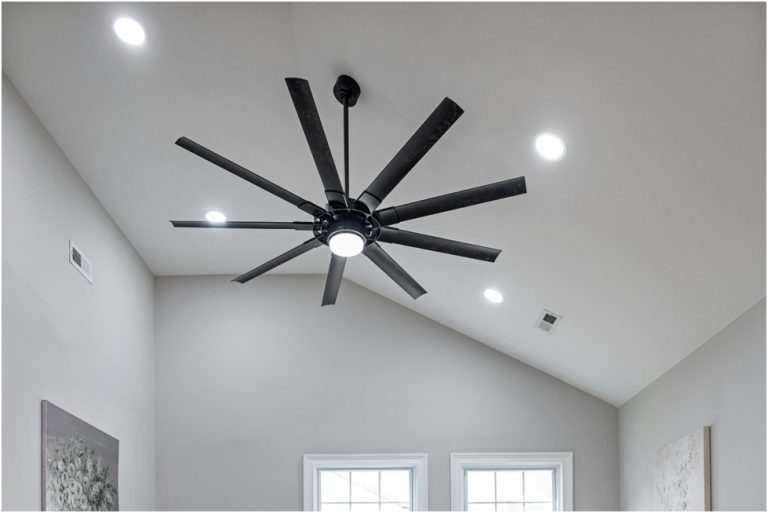How Ceiling Fan Direction Can Impact Your Energy Bills

Understanding the Role of Ceiling Fan Direction in Home Comfort
Ceiling fans circulate air, which can make you feel cooler or warmer depending on the fan’s direction, although they don’t alter the room’s actual temperature. Using ceiling fans strategically can enhance your home’s comfort level while decreasing energy consumption.
– Summer: In the summer, set your ceiling fan to spin counterclockwise. This creates a breeze that produces a wind chill effect, keeping you cool. According to the Department of Energy (DOE)), this cooling sensation can allow you to raise your thermostat setting by 4 degrees without losing comfort.
– Winter: During winter, switch the fan direction to clockwise at a low speed to redistribute warm air that has risen to the ceiling. This makes the room feel warmer, enabling you to lower your thermostat setting.
To maximize these energy-saving benefits, it’s important to understand how ceiling fan direction and air movement work together. This knowledge can help you save on energy bills while maintaining a comfortable living environment year-round.
Call Now! AC Repair professionals in Henderson. Call Comfort Masters Our estimates include supporting documentation for energy-use estimates, equipment model numbers and equipment match-ups. We work with trusted brands of HVAC equipment, including:
- York ®
- American Standard
- Lennox ™
- Rheem ®
- Trane ®
- Carrier ®
- Goodman ®
- Amana ®
What Direction Should a Ceiling Fan Rotate in Summer?
For summer, set your ceiling fan to rotate counterclockwise. This movement creates a downdraft, producing a cool breeze that enhances the wind chill effect. Utilizing higher fan speeds during summer can increase this cooling effect and help you stay comfortable on hot nights. If you find yourself overheating while you sleep, this setting can be beneficial throughout much of the year. Strategically using ceiling fans can lower your air conditioning costs.
Which Direction Should a Ceiling Fan Rotate in Winter?
In winter, your ceiling fan should rotate clockwise. This direction creates an updraft, pulling cooler air from the floor up and mixing it with the warmer air trapped near the ceiling. The blended air is then recirculated back into the room. Use a lower fan speed in the winter to distribute warm air gently without creating a chilly breeze. Adjusting the fan to the correct direction can keep your family warm without needing to turn up the thermostat.
How to Change Ceiling Fan Direction
Switching your ceiling fan’s direction for seasonal changes is simple and typically uniform for most models. Here’s how:
Manually
- Turn the fan off and wait for the blades to stop completely.
- Locate a small sliding switch on the fan’s motor housing.
- Slide the switch to the opposite side.
- Turn the fan back on to confirm the blades are rotating in the desired direction.
- Refer to the manufacturer’s manual for additional information if necessary.
Remotely
- Turn off the fan using the remote control.
- Press and hold the button that changes the fan’s direction. Consult the owner’s manual if you’re unsure which button to use.
- For smart fans, you might be able to change the direction via an app or voice assistant like Alexa or Google Home.
Turn Off Ceiling Fans When Unoccupied
Troubleshooting Your Air Conditioner (AC) or Heater Since ceiling fans don’t actually heat or cool a room, turn them off when the room is empty or when you leave the house. For example, you might keep the fan on while you’re in the bedroom sleeping or getting ready, but turn it off once you leave. While ceiling fans consume minimal electricity, turning them off when not needed can add to your energy savings.
Considering Installing Ceiling Fans?
If you don’t currently have ceiling fans, consider adding them to bedrooms and areas with vaulted or cathedral ceilings. Opt for ENERGY STAR®-certified ceiling fans for maximum comfort with minimal energy use. These fans are up to 40% more efficient than standard models.
Room and Ceiling Considerations
– Fan Size: Ensure you choose fans that are appropriately sized for your room. Product listings typically specify the square footage a fan can efficiently cover. Fans with a blade span of 52 inches or more are ideal for larger spaces like vaulted ceilings, cathedral ceilings, or stairwells. If your air conditioner won’t turn on, it could be caused by a power connection issue.
– Smaller Spaces: For smaller areas like bedrooms, fans with a 36-inch blade span work best. Rooms with lower ceilings should use flush-mounted fans, while taller ceilings may require an extension rod.
Convenience Features
Comfort Masters For ceiling fans mounted on higher ceilings, consider models with remote controls. This feature allows you to easily change the fan’s direction without needing to climb a ladder to adjust the switch.
Installing ceiling fans lets you adjust your thermostat while maintaining comfort, which is not only cost-effective but also environmentally friendly.
Don’t Forget Seasonal HVAC Maintenance
To prevent energy costs from skyrocketing, keep your HVAC system operating at peak efficiency. Regularly change air filters and schedule routine maintenance: a fall tune-up for your furnace or heat pump and a spring tune-up for your air conditioner or heat pump.
Let our experienced technicians install your new unit to get the most out of your equipment.


